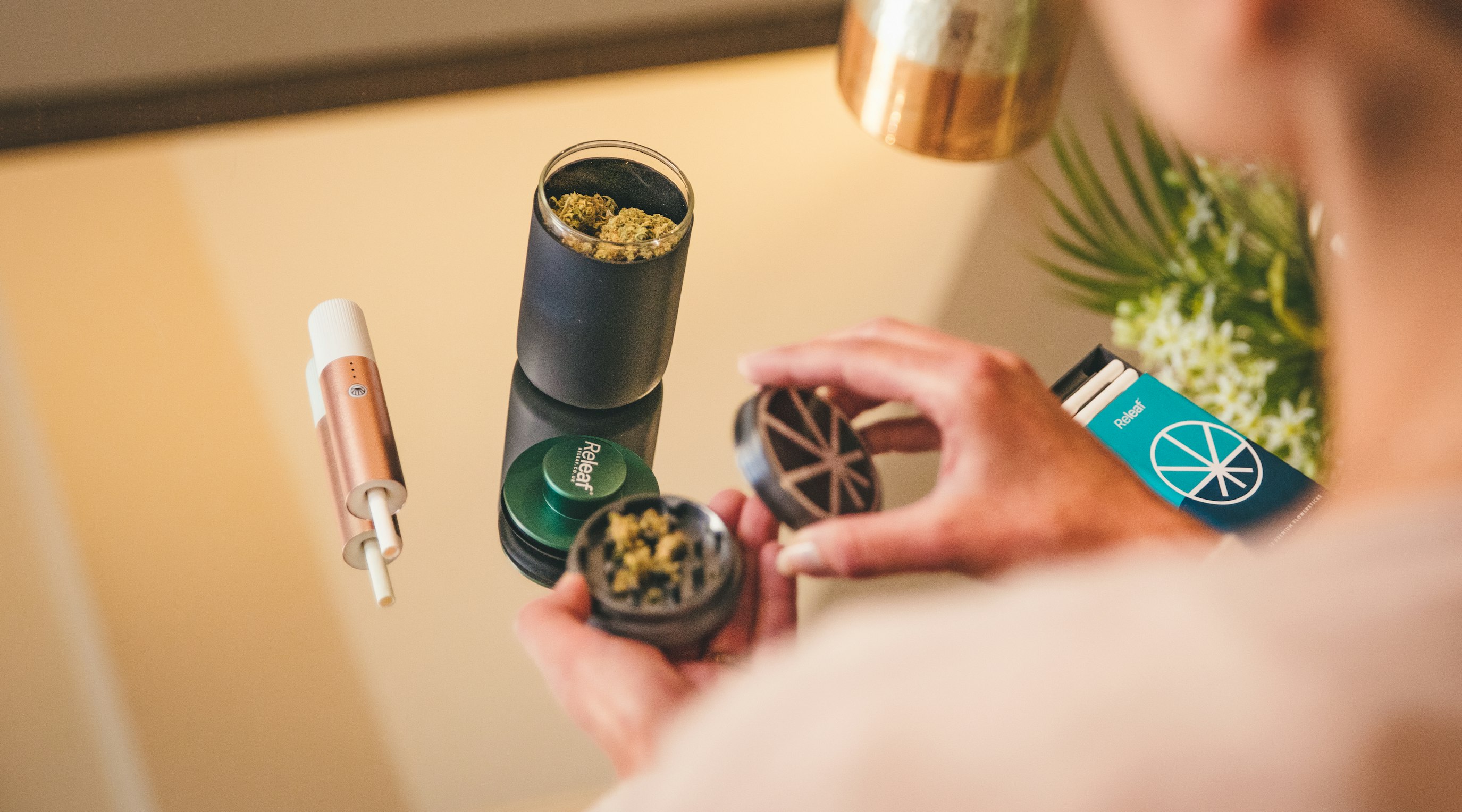Vaping medical cannabis flower: How much THC am I using?
7 min read
Editorial Team
Contents
The dosage information for THC flowers is slightly ambiguous, and many patients may not know exactly how much THC they are taking per dose. The tables help identify how much THC is taken with each prescribed dose. Dividing this by 4.5 will give you a more realistic A look into the THC doses being prescribed
Cannabis flowers do not follow the same dosage formula as conventional pills or inhaled medications. Instead of being prescribed THC in a set number of mg, patients are prescribed a weight of a specific percentage of THC-rich flower. This format raises the question - How much THC are you taking each time with different strains?
What are medical cannabis flowers?
Medical cannabis flowers are the trimmed flowersets that grow on cannabis plants. They have been grown under highly regulated conditions with government licences and tested to ensure they meet medical safety criteria for human use. It includes screening for harmful moulds, bacteria and contaminants like pesticides and heavy metals in authorised labs.
What is in medical cannabis flowers?
Medical cannabis flowers are primarily grown for the THC, CBD and terpene content. However, they contain other active pharmaceutical ingredients such as esters, thiols, aldehydes and flavonoids. Other than the interesting things we’ve just mentioned, there are lots of other components in the biological plant matter of cannabis flowers, like lipids, carbon, and nitrogen. For the purposes of prescribing, the THC and CBD content with the absence of contaminants is what matters most to medical and quality regulators. For patients, however, it's not just about the THC and CBD; they rely on specific terpene profiles to control their specific symptoms.
How are medical cannabis flowers produced?
Medical cannabis crops can only be grown under givernment licence. Cannabis takes approximately 12 weeks to grow from their first day until they are chopped down for drying and processing during harvest. Plants are grown from clones so that each plant has genetic and chemical uniformity. The first four weeks of the plant's life are spent under 18 hours of light giving them all the sunlight (or artificial light) they need to become established plants. Following this, plants are switched to 12 hours on and 12 hours off light cycle, initiating the flowering stage just as it would with the seasons changing. By week six, the flowers will be swollen and sticky and produce higher volumes of aroma and THC.
Around week 8, when the plant is at the optimum level of THC and terpene production, the plants are harvested. The flowers will be removed from the stems and the outer leaves removed, leaving just the carefully shaped inflorescence. Medical cannabis flowers must be dried to 10% moisture under packaging regulations to help ensure the correct length of shelf life. Additional processing, such as sterilisation, may take place, and this may be in the form of gamma or beta irradiation. Increasingly, humidity packs that are inserted into the medical cannabis flower pot are being sent out by clinics and pharmacies to help improve the quality and experience of patients.
Why do some patients prefer medical cannabis flowers over oil?
Some patients prefer medical cannabis flowers over oil because of the benefits they deliver. Firstly, cannabis flowers are a fast-acting symptom reliever (but the effect may not last as long as an oil). Inhaling cannabinoids is an incredibly quick way to get them into the bloodstream and respiratory delivery of cannabinoids is more bioaccessible than oral administration.
Another reason is they provide a more nuanced and tailored range of products. Oil tinctures do not have as much of a strain-specific effect as inhaling a strain profile due to the way the stomach acids metabolise the terpenes. There is certainly a difference between sedative and uplifting oil profiles, but the breadth and range of difference between inhaled cannabinoids and terpenes is reportedly much greater.
What are the challenges with medical cannabis flowers' THC values?
The issue with medical cannabis flowers' THC values is they don’t tell you exactly how much THC you are using! The majority of cannabis-based medicinal products being prescribed in the UK are cannabis flowers, with a majority of these being high THC. Due to natural cannabis flowers, there is no standardisation and uniformity between each inflorescence (flower set or, even more commonly, nug) size or weight. Therefore, a standardised mg of THC per flower cannot be given. But that might not be helpful with how people administer flowers with a vape…
Cannabis flowers come fully formed and unprocessed into the final preparation, requiring the patient to complete the process by breaking off a small amount and grinding it, weighing it and then filling the flower stick or vaporiser. Patients are prescribed to vaporise a set dose of flower in mg on a case-by-case basis. The frequency may also vary.
How much THC is in the final loaded vape chamber is determined by two factors.
- The percentage of THC in the strain of flower
- The amount of flower prescribed per dose
Which looks a little something like this when we go to work it out:
THC(%) X weight (mg) = THC mg
a X b = c mg
Whilst this equation might be helpful, most people aren’t human calculators!
So, to assist you in working out the true dose of THC you are taking, we’ve put together this useful table to show you what different strengths of THC and doses equate to in mg of THC.
Three common doses for medical cannabis flowers are 0.125mg, 0.2mg and 0.25mg.
How much THC is absorbed when medical cannabis is vaped?
The amount of THC you absorb when you vaporise medical cannabis is approximately between 10 and 35 per cent. The rest is either not extracted from the original plant material where it remains, or it is exhaled before having the chance to pass through the alveoli in the lungs. This is a relatively low level of efficiency when looking at it economically. The low absorption rate for the administration type has been one of the many driving factors to why new inhaler products are being developed for the medical market. With this in mind, it is sensible to consider that you only receive around a quarter of the cannabinoids you inhale.
Releaf understands that embarking on your medical cannabis journey can be overwhelming, and even slightly intimidating – that’s why we offer tailored monthly packages, specialist consultations for medical cannabis, and our unique medical cannabis card to give you the peace of mind that your treatment is protected, all based on your medical cannabis prescription.
Read our blog on switching from smoking to vaping.
Share article
Did you like this article?
It is important to seek medical advice before starting any new treatments. The patient advisors at Releaf are available to provide expert advice and support. Alternatively, click here to book a consultation with one of our specialist doctors.
Elevate your wellness with medical cannabis
Get comprehensive care, convenience, and confidence with an all-in-one treatment plan.
Am I eligible?Authors
Editorial Team
Article written by the Releaf Editorial Team, a group of seasoned experts in cannabis healthcare, dedicated to enhancing awareness and accessibility in the field through their wealth of knowledge and experience.
fact checked
Compliance Director
Editorial Policy
All of our articles are written by medical cannabis experts, guided by strict sourcing guidelines, and reference peer-reviewed studies and credible academic research. Our expert clinical team and compliance specialists provide valuable insights to ensure accuracy when required. Learn more in our editorial policy.
Need more help?











